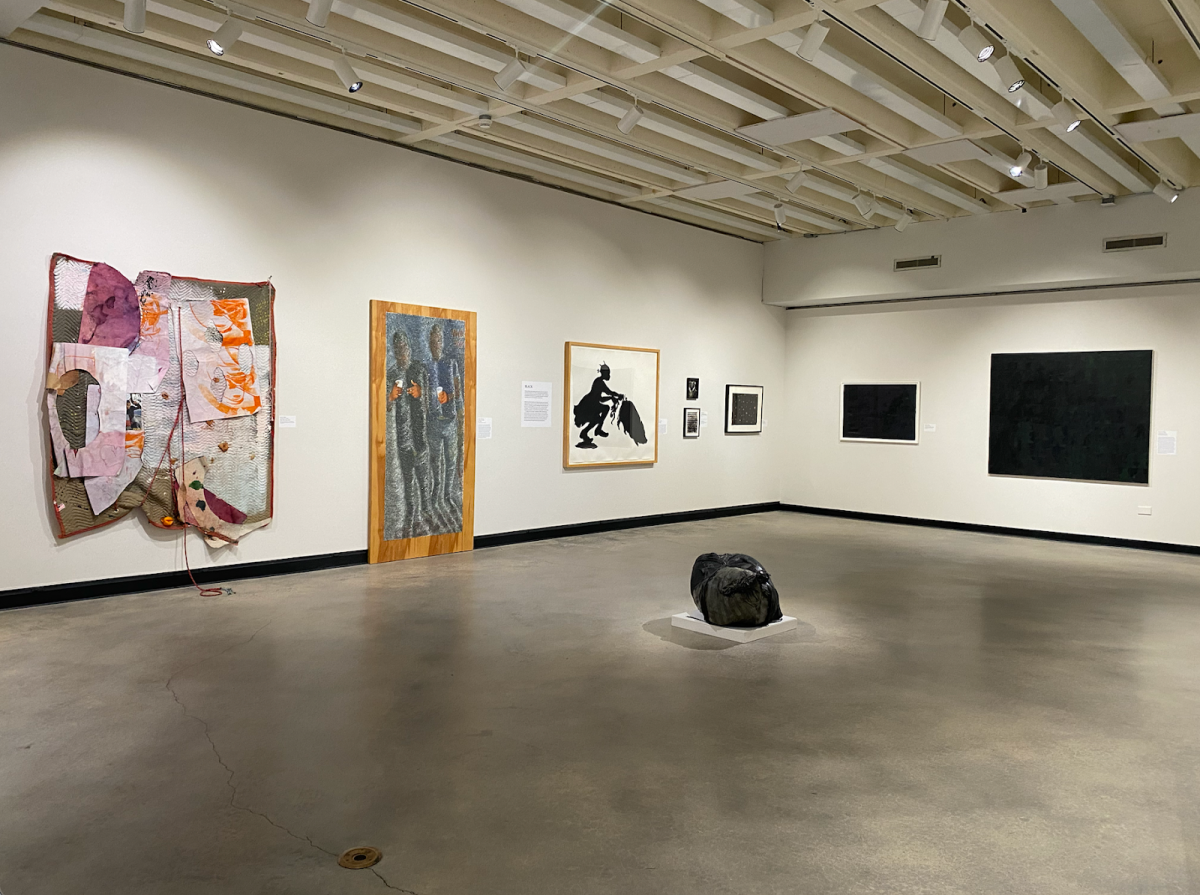The entrance to Scales Fine Arts center was flooded, as attendees poured into the Hanes Art Gallery. On the evening of Feb. 6., the ‘Hanes After Hours’ event was centered around the “Young, Gifted and Black” exhibition.
Attendees congregated around the exhibit, admired the vibrant artwork on display, enjoyed free food, listened to culturally Black music from a live DJ and joined small group tours led by Wake Forest students.
Winston-Salem marks the traveling exhibition’s ninth stop as it makes its way around the country. “Young, Gifted, and Black: The Lumpkin-Boccuzzi Family Collection of Contemporary Art” highlights artists of African descent whose work explores identity, politics and art history. It will be on display through March 29.
The exhibition showcases an emerging generation of contemporary creators as they grapple with redefining the notion of Blackness in their work. The curators selected pieces that encapsulated four central themes: dramatic use of color, reclamation of the color black, materiality (nontraditional materials) and an expanded idea of portraiture.
“I hope that it’s highlighting artists of African descent who have historically been underrepresented in museums and galleries so that people can see that these artists are doing so well and they made it,” said Rachael Hayes, assistant director of Hanes Art Gallery. “I hope that they can relate to the artwork, connect with it, and feel inspired by what’s in the exhibition.”
The significance of the exhibition extends far beyond the gallery walls. While the venue offers a glance into the incredible artistic abilities of many Black individuals, it also stimulates a conversation regarding racial underrepresentation in museums and academia. As Wake Forest assesses its own historical ties to slavery, segregation and wealth disparity, events like these provide a necessary window for deeper reflection, discussion and healing.
“This exhibit gives voice to artists who have historically been overlooked,” said Michelle Gong, a sophomore student docent. “It challenges the way we think about identity in art and forces us to engage with its deeper societal implications.”
Hidden among the event’s attendees was Clifford Owens, a Baltimore-born Black artist, whose 2015 piece, “Untitled,” was one of the 51 artworks on display. Owens delivered a lecture exploring his artistic practice the evening prior to the event. While his creative work reflects many of the same themes as his counterparts, Owens emphasizes the importance of redefining the narrative around Blackness.
“My art is not just Black art — it is American art,” Owens said. “When we constantly label things as ‘Black,’ we further emphasize the divide between races in this country. Art should be about unity, about the shared human experience.”
This opening event was co-hosted by the Intercultural Center and the Hanes Art Gallery. By working together to increase student engagement and attendance, “Hanes After Hours” expands campus awareness of the exhibition and encourages students to connect with the artwork through the establishment of a fun, inviting setting.
“I really think it’s a cool event, I wish I had heard of more things like this,” said Kappi Jernigan, a junior from Atlanta. “I think it’s a good way to celebrate art, especially highlighting the importance of a month like Black History Month in a unique way.”
The organizers of the Hanes Art Gallery are among those leading an effort to increase student traction for the exhibition. One goal of bringing “Young, Gifted, and Black” to Wake Forest is to increase minority student representation, especially given Wake Forest’s traditional status as a predominantly white institution (PWI).
“The pleasure of visual experience is universal,” Owens said. ‘It goes beyond the color of our skin, our family history, class, religion, gender. Art brings us together, and that is what I want people to take away.”
Although the event received a strong turnout, the efforts for establishing a more equitable and racially inclusive campus are certainly ongoing.










